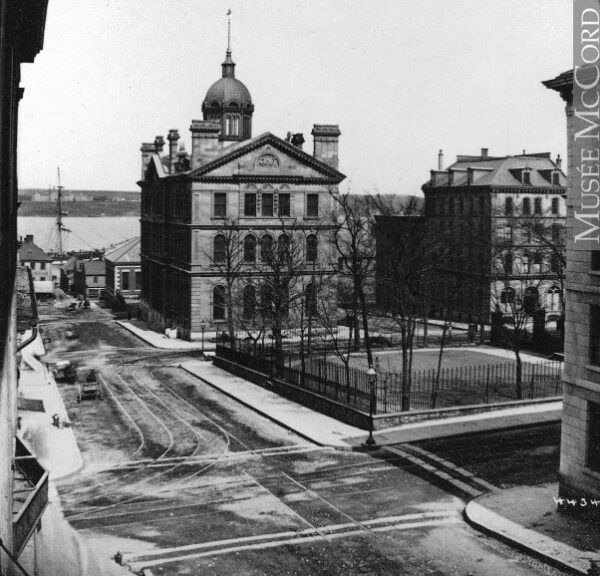Last spring, while prepping to lead a Jane’s Walk to admire Italianate Style buildings in downtown Halifax, I became aware of some splendid photos of buildings that could have been on the tour. The problem was the buildings had been replaced long, long ago. But now, through the magic of this blog post, I can take you on a little architectural ghost tour to enjoy these forgotten masterpieces.
Most of these lost treasures were banks. Just like today 19th century banks were concerned about their image and wanted branches to look imposing and secure. And because banks also want to appear up to date, these old buildings were demolished to make way for more contemporary styled bank buildings.
The oldest building on this tour is the Bank of British North America constructed about 1850 on Hollis Street and designed Halifax starchitect David Stirling (the site is now covered by the former Bank of Montreal Tower). This photo was taken in1903 and it appears that by that time there had been some changes. Like why is that little moulding over the centre window?
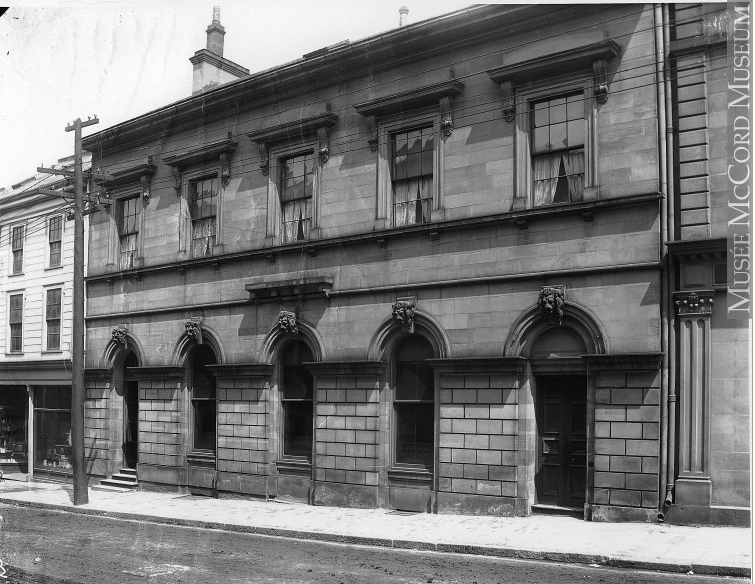
McCord Museum, 3703.2
A couple of years earlier David Stirling was based in St. John’s and designed the BBNA branch there. This 1850 lithograph shows that building was very similar to the branch in Halifax, just one story taller and two window bays narrower. And look at the central entrance, and admire the coat of arms resting on a little section of moulding! Wonder what happened to the Halifax coat of arms?

Toronto Public Library, JRR2293
Directly across Hollis Street from the BBNA was the most extraordinary bank building of that time, the 1857 Bank of Nova Scotia. The façade is dominated by eight, free standing, columns flanking seven monster windows. There is just so much going on, particularly compared to its older, undecorated, neighbours. The former Royal Bank Tower occupies this site today.
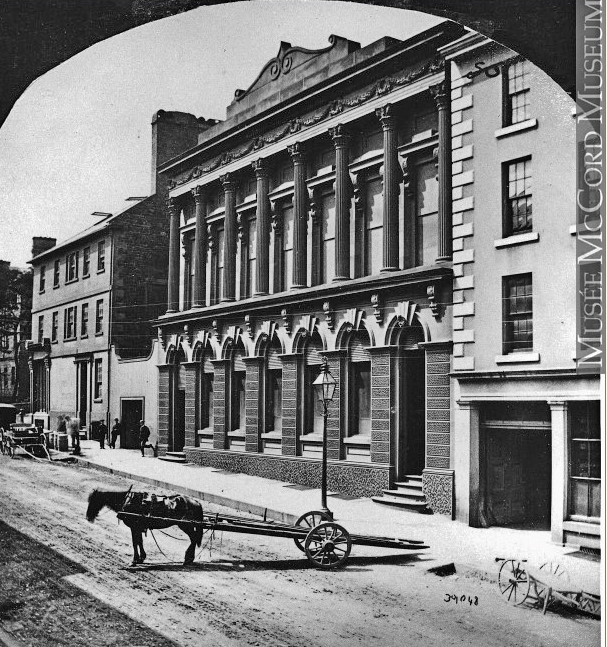
Notice the parking 1869 style: a handcart in the foreground, a wagon up the street, and that horse drawn delivery cart parked in the middle of the street. McCord Museum I-39048.1
On the right is the Union Marine Insurance building, well regarded when it was built in 1862. This is Bedford Row and the Provincial Building replaced the two buildings on the right in 1935.
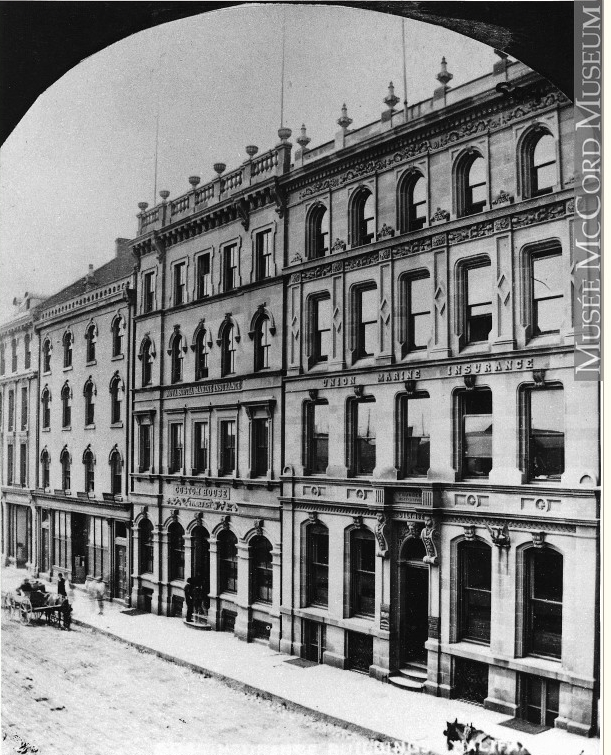
McCord Museum I-39051.1
The much beloved 1930s Bank of Nova Scotia building at the corner of Hollis and Prince replaced this jewel, the grand 1863 Union Bank. The rooms on the second floor must have been palatial, with very high ceilings and little iron balcony railings.
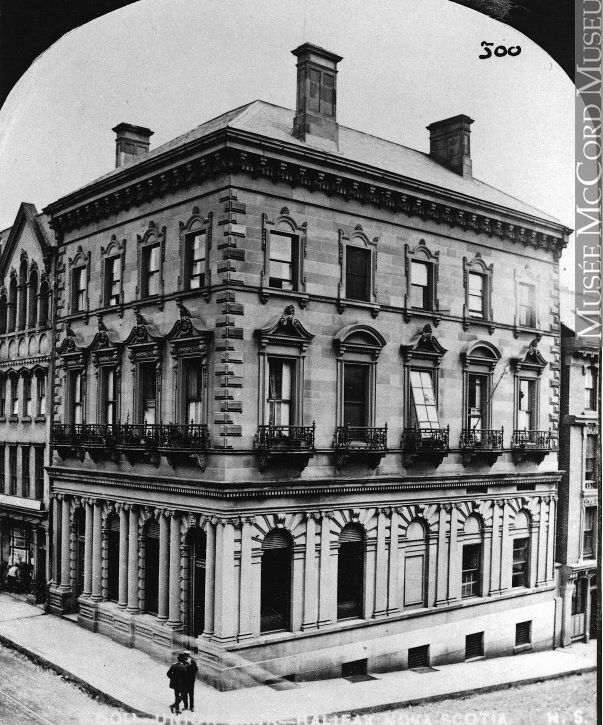
The Union Bank was designed by C.P. Thomas who was also architect for many of the buildings on the Granville Street Mall and the Spring Garden Road Court House. McCord Museum, I-39049.1
No need to weep too much for these lost buildings because some of the best examples of this style have survived. Consider the enduring magnificence of the Halifax Club. Here is 1869.
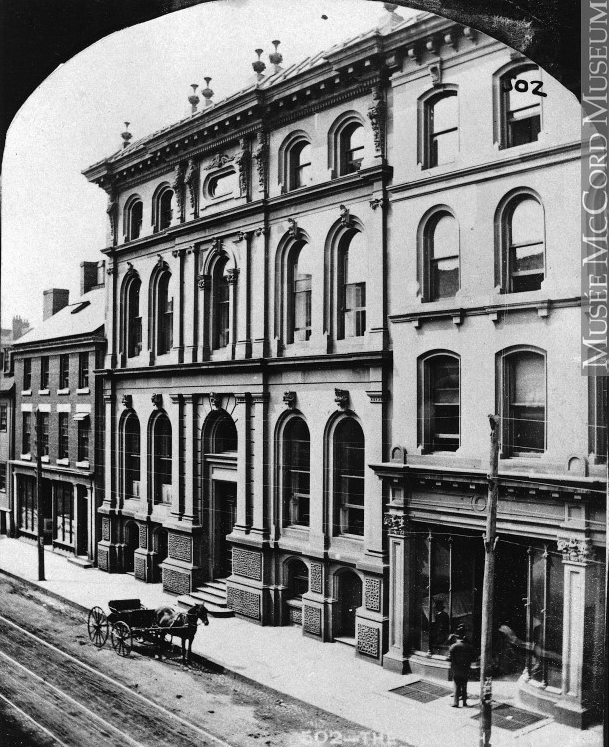
McCord Museum I-39053.1
And this is what folks saw on the Jane’s Walk last year.
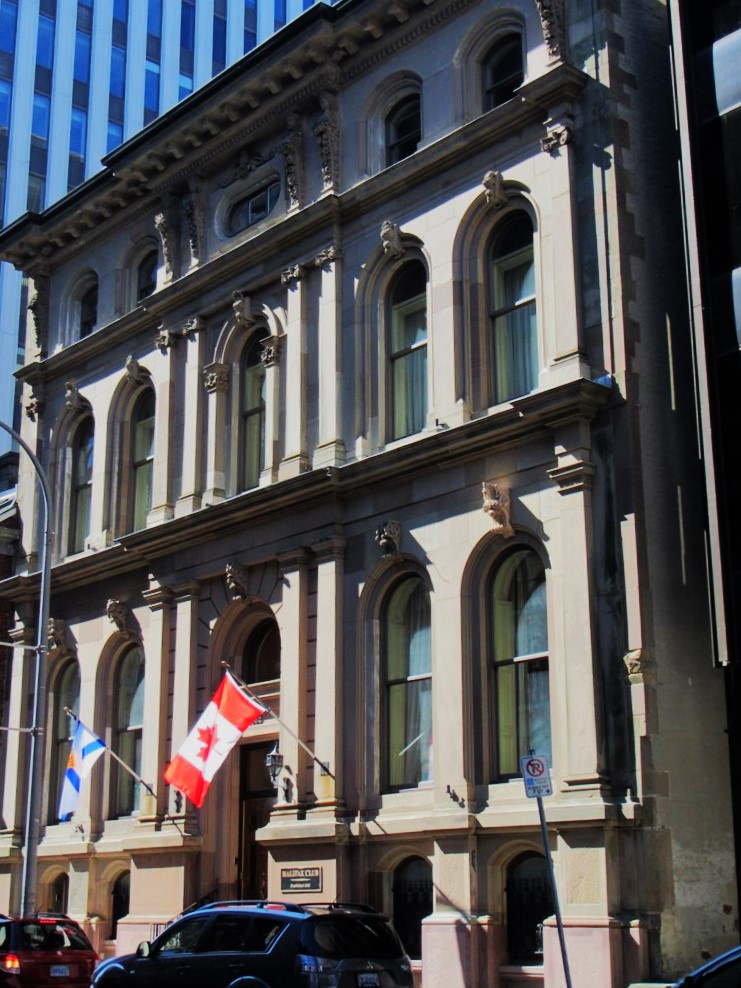
I always point out the row of bountiful ladies “supporting” the roof.

And then there is the largest of Halifax’s Italianate style buildings, the 1869 Post Office, now the home to the Art Gallery of Nova Scotia. Here in 1869. . .
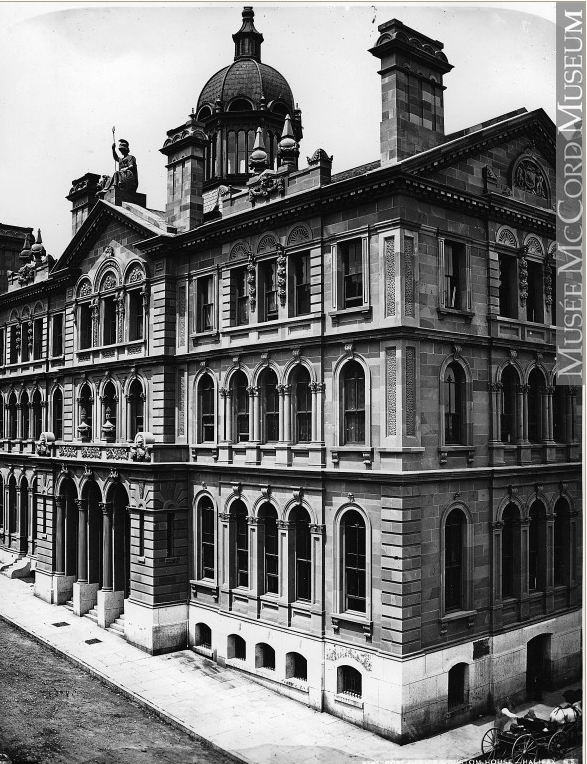
McCord Museum I-39063
and today, after meticulous restoration. Both the AGNS and the Halifax Club were designed by David Stirling, the architect for the Bank of British North America where we started our tour.

Postscript
Most of these high quality photos were taken in 1869 by the Notman Studio, a Halifax branch of a Montreal business. They were perhaps commissioned to be converted into illustrations for publications, like this, from a souvenir booklet for visitors to Halifax.

Halifax Album, c1880





